Transmission Control Module (TCM)
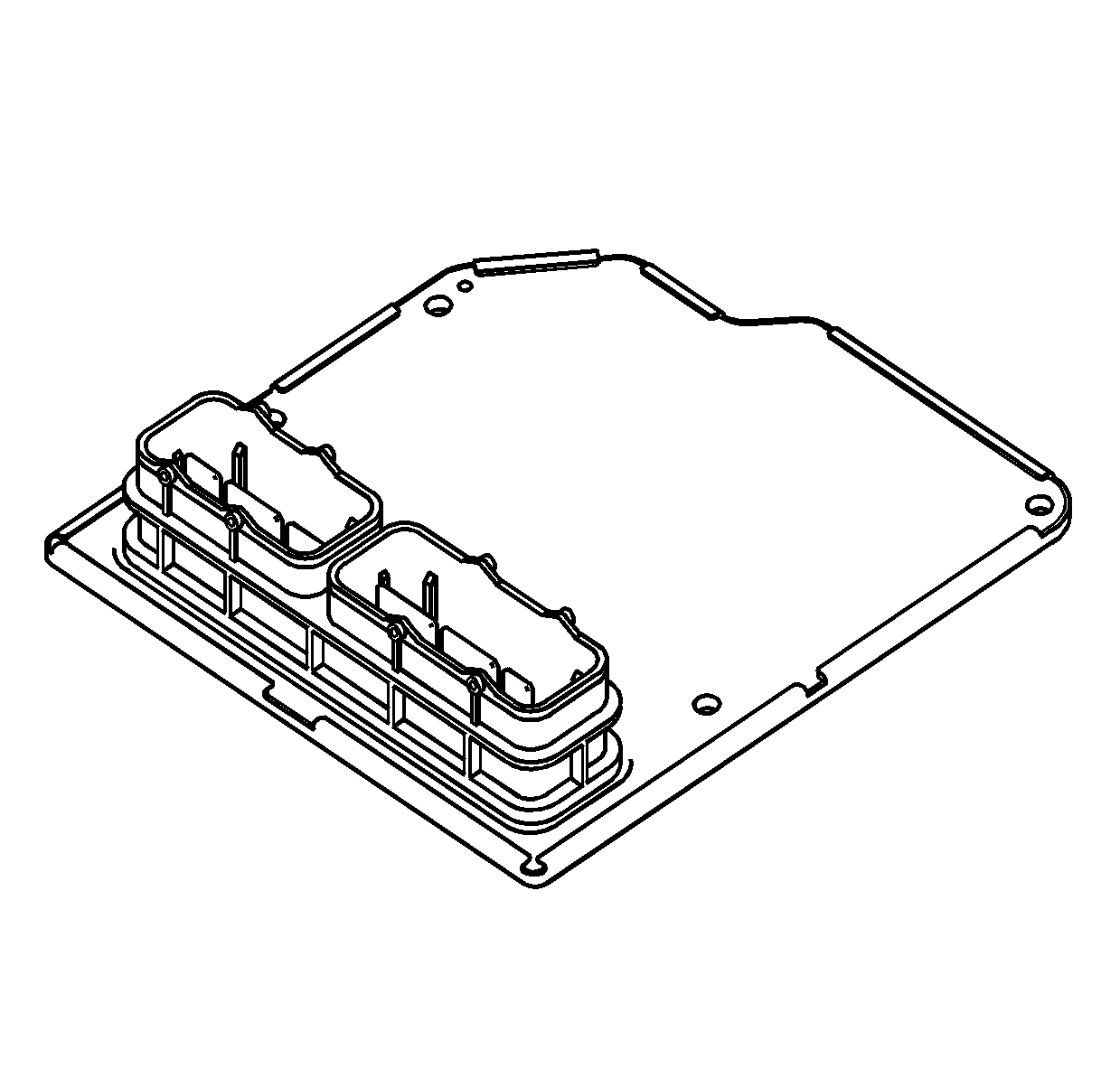
The transmission control module (TCM) is mounted in the engine compartment
and connects directly to the engine wiring harness. A single 42-way
connector is used to make the connection between the vehicle wiring and
the TCM. The TCM is an electronic control module that receives input or
provides output in order to control the operation of the 5L50-E
automatic transmission.
The TCM receives the following inputs from the engine control module
(ECM):
| • | Engine speed and torque values |
| • | Engine intake air temperature (IAT), accelerator pedal position
(APP) information |
| • | Engine coolant temperature (ECT) |
| • | Traction control status |
| • | Driver selected shift mode |
| • | Air-conditioning (A/C) status |
The ECM provides this data to the TCM through the controller area network
(CAN). The CAN is a 2-wire communication connection between the
2 controllers.
Other TCM inputs are the following:
| • | Battery and ignition voltage |
| • | Transmission manual shift shaft switch assembly |
| • | Transmission fluid temperature (TFT) |
| • | Transmission input shaft speed (ISS) sensor |
| • | Transmission output shaft speed (OSS) sensor |
The TCM provides the following outputs in order to control the automatic
transmission:
| • | Shift solenoids to control transmission shifting |
| • | TCC PWM solenoid operation controls the apply and release of the
torque converter clutch ASM |
| • | Pressure control solenoid (PCS) regulates transmission line pressure |
Other TCM outputs provided to the ECM are the following:
| • | MIL illumination request |
| • | Transmission input speed |
| • | Transmission fluid temperature |
| • | Torque reduction requests |
| • | Manual shift shaft switch status |
| • | Transmission service status |
Transmission Manual Shift Shaft Switch Assembly (602)
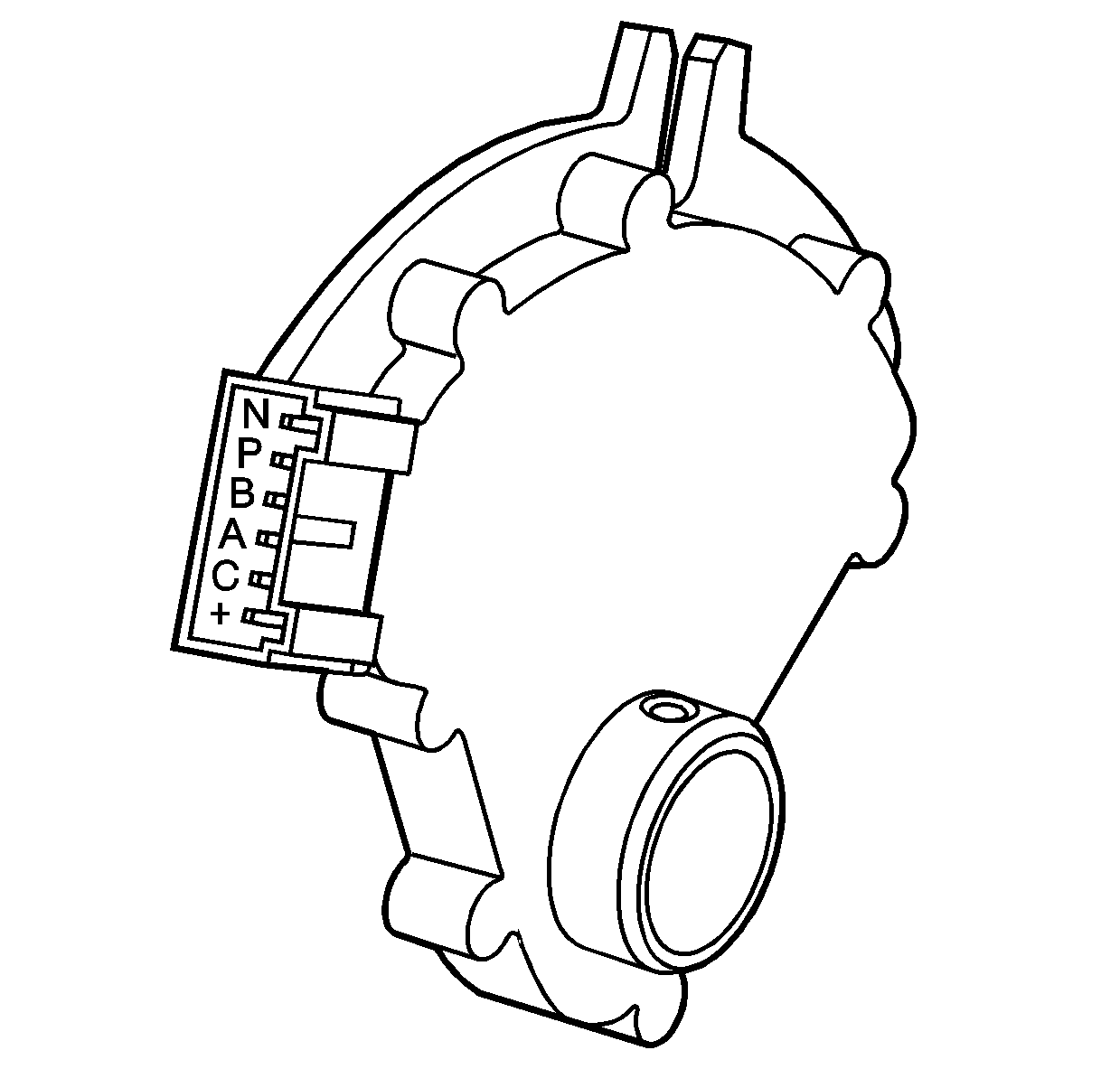
The transmission manual shift shaft switch assembly (602) is
a sliding contact switch attached to the manual shift shaft inside the transmission
case. The five inputs to the TCM from the transmission manual shift shaft
switch assembly indicate the transmission gear selector lever position. This
information is used for engine controls as well as determining the transmission
shift patterns. The state of each input is available for display on the scan
tool. The five input parameters represented are Signal A, Signal B,
Signal C, Signal P (Parity) and Signal N (P/N Start).
Automatic Transmission Output Speed (A/T OSS) Sensor (42)
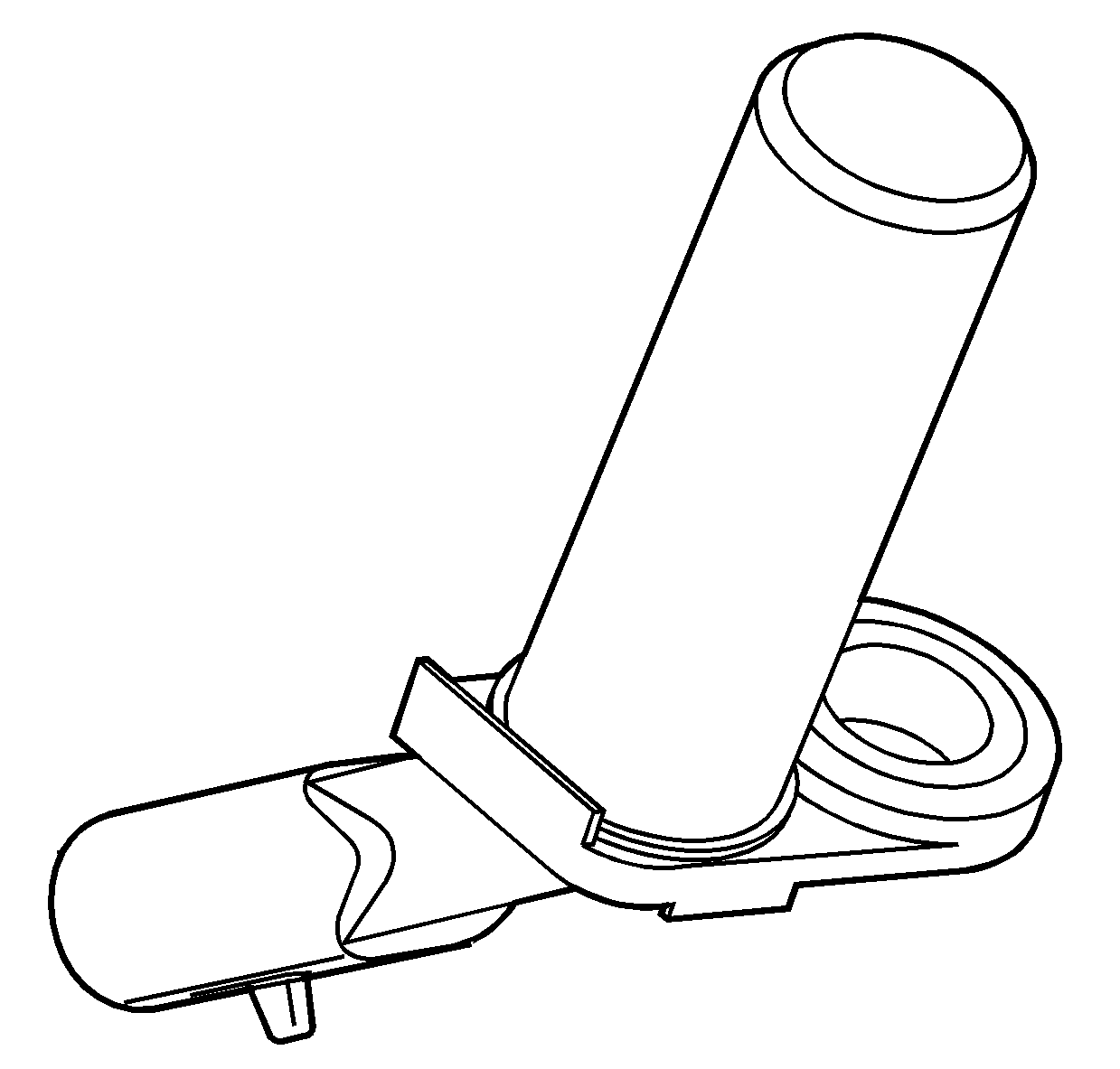
The A/T OSS sensor is a variable reluctance magnetic pickup located
in the rear of the transmission case. The sensor is mounted in the case (24)
opposite the rear internal gear (560). The rear internal gear is splined to
the output shaft assembly (562). The sensor consists of a permanent magnet
surrounded by a coil of wire. As the output shaft and rear internal gear rotate,
an alternate current (AC) is induced in the coil by the 'teeth' on the rear
internal gear as they pass by the magnetic pickup. Therefore, whenever the
vehicle is moving, the A/T OSS sensor produces an AC voltage signal proportional
to vehicle speed.
At the TCM, the AC signal is electronically converted to a 5 volt
square wave pattern. The square wave pattern can then be interpreted as transmission
output speed by the TCM through the frequency of square waves in a given time
frame. The square waves can be thought of as a representation of the rear
internal gear teeth. Therefore, the more teeth or waves that pass by the magnetic
pickup in a given time frame, the faster the vehicle is moving. The square
wave pattern is compared to a fixed clock signal internal to the TCM
to determine transmission output speed.
Automatic Transmission Input Speed (A/T ISS) Sensor (44)
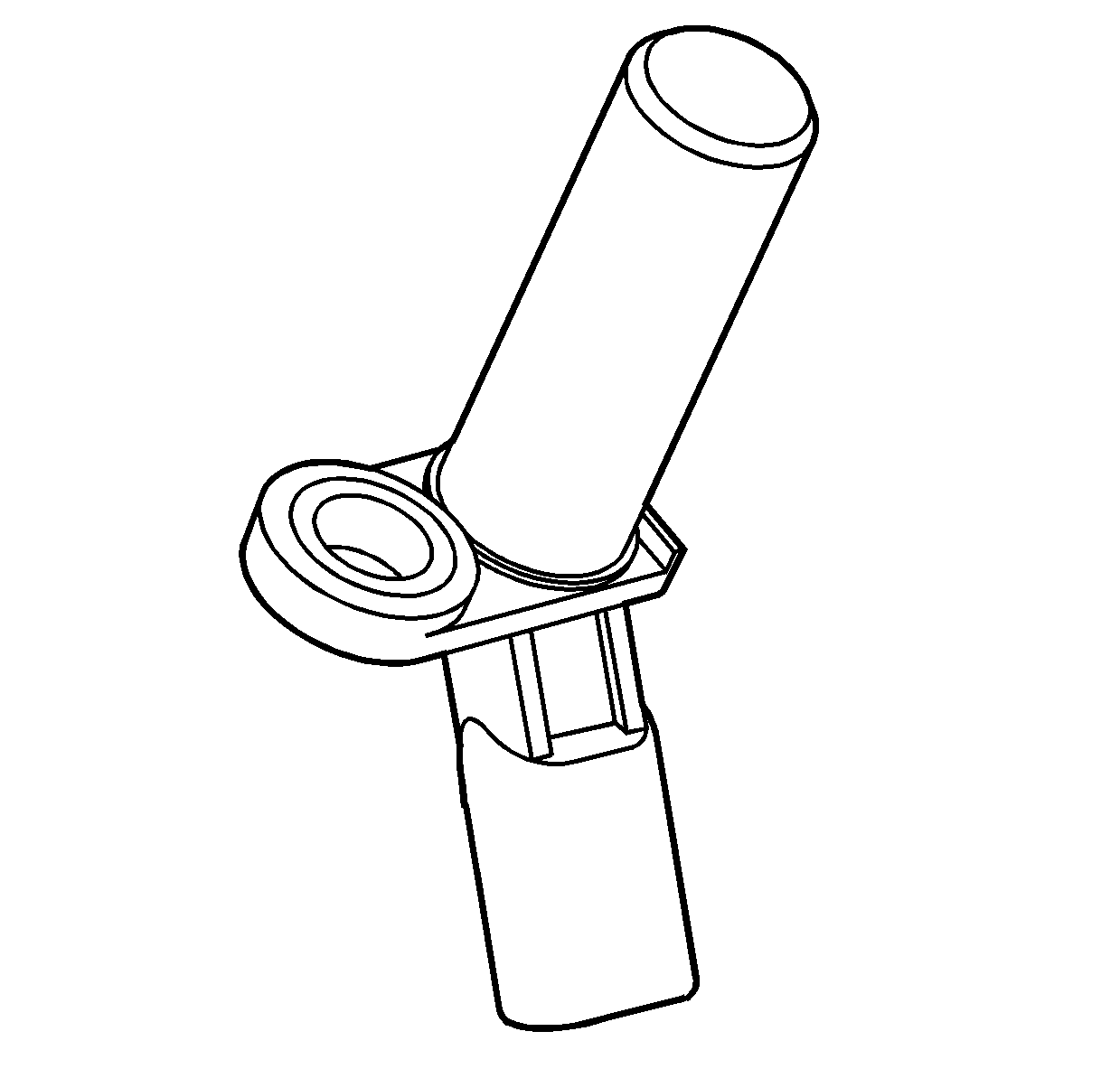
The A/T ISS sensor operates identically to the A/T OSS sensor except
that is uses the stamped teeth on the reverse clutch input housing assembly
(401) as the rotor reluctor. Remember that the reverse clutch input housing
assembly is driven at converter turbine speed. The A/T ISS sensor square wave pattern
is also compared to a fixed clock signal internal to the TCM to
determine actual converter turbine speed. The TCM uses transmission input
and output speeds to help determine line pressure, transmission shift patterns,
TCC apply pressure, gear ratios, and TCC slippage for diagnostic purposes.
Automatic Transmission Fluid Temperature (TFT) Sensor
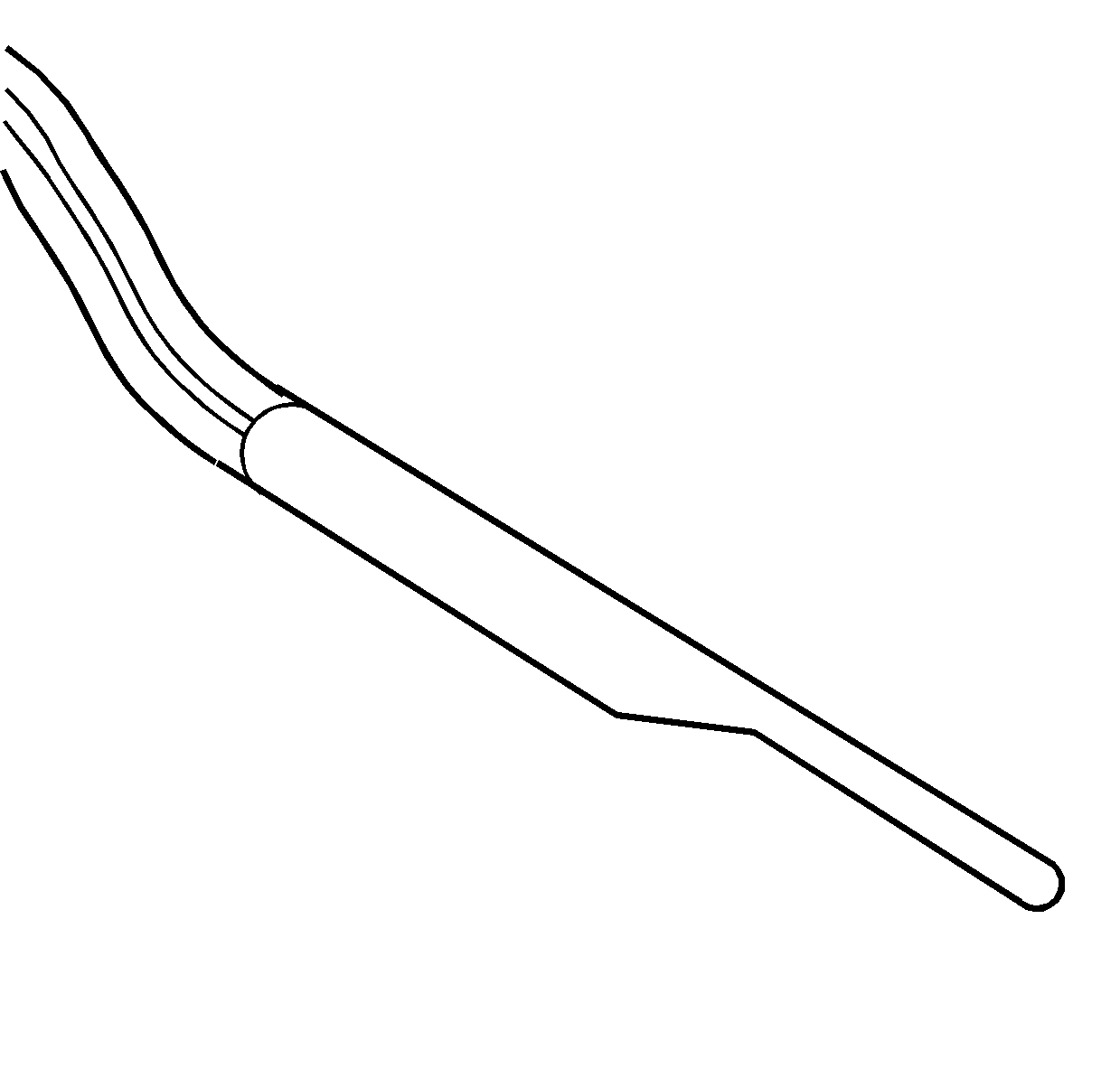
The TFT sensor is part of the transmission wiring harness assembly (55).
The TFT sensor is a resistor, or thermistor, which changes value based on
temperature. Refer to
Transmission Fluid Temperature Sensor Specifications. The sensor
has a negative-temperature coefficient. This means that as the temperature
increases, the resistance decreases, and as the temperature decreases the
resistance increases. The TCM supplies a 5-volt reference signal to
the sensor and measures the voltage drop in the circuit. When the transmission
fluid is cold the sensor resistance is high and the TCM detects high signal
voltage. As the fluid temperature warms to a normal operating temperature,
the resistance becomes less and the signal voltage decreases. The TCM uses
this information to maintain shift quality and torque converter clutch apply
quality over operating temperature range.
If transmission fluid temperatures become excessively high, above approximately
140°C (248°F), the TCM will disable ECCC function and command lock
up mode. Applying the TCC serves to reduce transmission fluid temperatures
created by the fluid coupling in the torque converter with the TCC released.
Above approximately 149°C (284°F), the TCM will set a transmission
fluid temperature code (P0218). This causes the TCM to use a fixed default
value of 135°C (275°F) as the transmission fluid temperature input
signal.
Shift Solenoid Valves

The Hydra-matic 5L50-E uses three electromagnetic shift
solenoid valves 1-2, 2-3 and 4-5 to control upshifts and
downsifts in all forward gear ranges. The shift solenoid valves are all identical,
normally closed, 3-port, ON/OFF type solenoids controlled by the TCM.
These shift solenoid valves work together in a combination of ON and OFF
sequences to control the various shift valves. The TCM uses numerous inputs
to determine which solenoid state combination the transmission should be
in. Refer to
Shift Solenoid Valve State and Gear Ratio.
Torque Converter Clutch Pulse Width Modulation (TCC PWM) Solenoid Valve
(352)
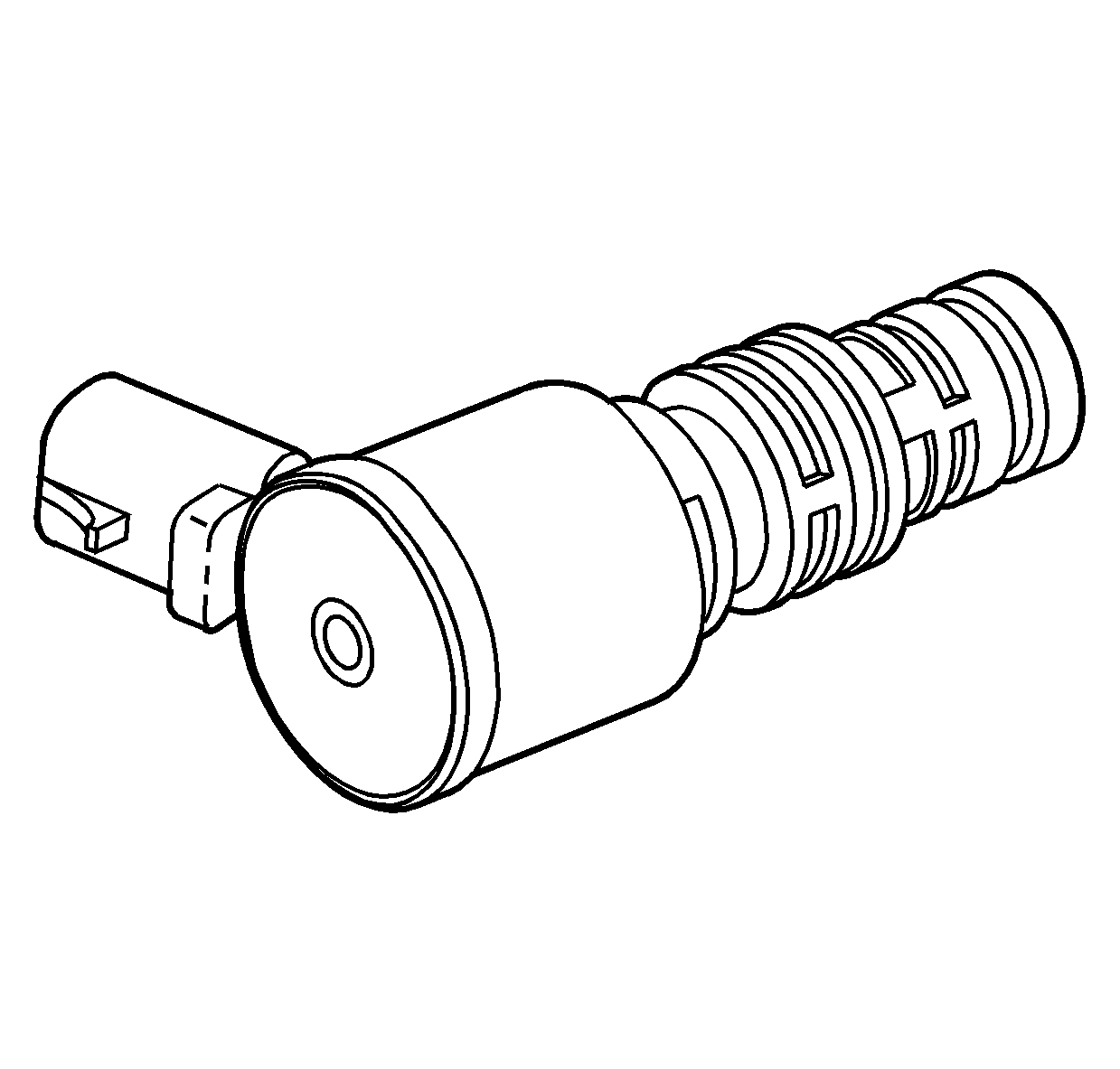
The TCC PWM solenoid valve is a normally-closed, pulse width
modulated (PWM) solenoid used to control the apply and release of the converter
clutch. The TCM operates the solenoid with a negative duty cycle, at a fixed
frequency of 32 Hz, to control the rate of TCC apply/release. The solenoid's
ability to 'ramp' the TCC apply and release pressures results in a smoother
TCC operation.
When vehicle operating conditions are appropriate to apply the TCC,
the TCM increases the duty cycle to allow the TCC PWM solenoid valve to command
TCC signal fluid pressure at a level sufficient to move the TCC enable valve
and the TCC control valve to the apply position. Release pressure is directed
to exhaust, and regulated apply fluid is directed to the apply side of the
converter pressure plate/damper assembly. The TCM then increases the duty
cycle to control a slippage of 20-80 RPM between the pressure
plate/damper assembly and the converter cover. This provides for improved
filtration of engine vibrations and allows the TCC to apply at low engine
speeds in 2nd, 3rd, 4th and 5th gear. At high speed, lock up mode is set by
activating the TCC PWM solenoid valve at maximum duty cycle.
Release of the TCC is achieved by decreasing the duty cycle to a level
low enough to allow spring force to move the TCC enable valve and the TCC
control valve to the release position. Apply fluid is directed to exhaust
and converter feed fluid is directed into the release circuit to the release
side of the pressure plate/damper assembly.
There are also some operating conditions that may prevent or enable
TCC apply under various conditions, engine temperature, transmission temperature,
or brake switch activation, depending on vehicle application.
TCC PWM solenoid valve resistance should measure between 10.0-11.5 ohms
when measured at 20°C (68°F). The resistance should measure approximately
16 ohms at 150°C (300°F).
Pressure Control (PC) Solenoid Valve (357)
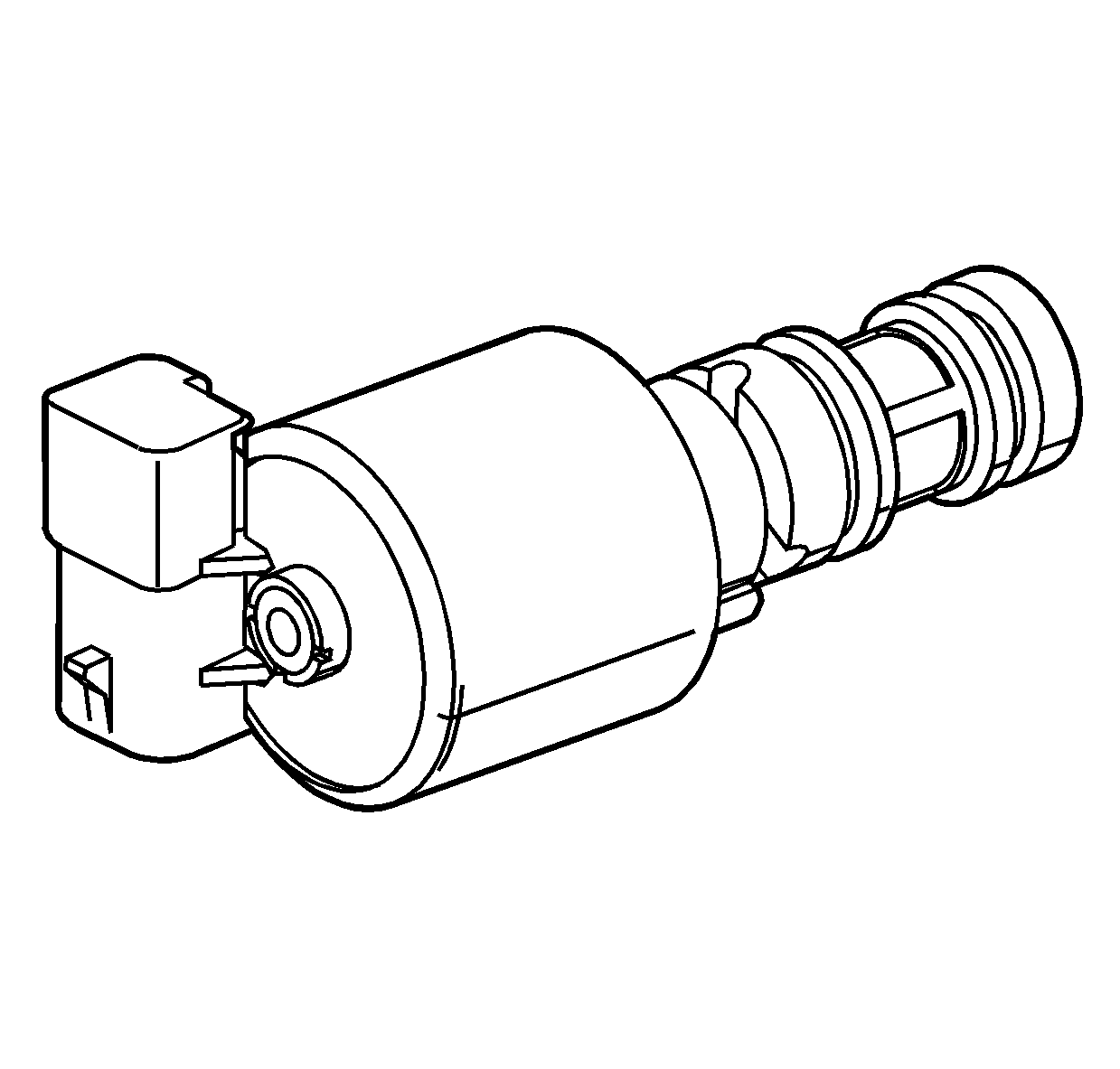
The pressure control (PC) solenoid valve is a precision electronic pressure
regulator that controls transmission line pressure based on current flow through
its coil windings. As current flow is increased, the magnetic field produced
by the coil moves the solenoid's plunger further away from the exhaust port.
Opening the exhaust port decreases the output fluid pressure regulated by
the PC solenoid valve, which ultimately decreases line pressure. The TCM controls
the PC solenoid valve based on various inputs including throttle position,
transmission fluid temperature and gear state.
Duty Cycle, Frequency and Current Flow
A duty cycle may be defined as the percentage of time current is flowing
through a solenoid coil during each cycle. The number of cycles that occur
within a specified amount of time, usually measured in seconds, is called
'frequency.' Typically, the operation of an electronically controlled pulse
width modulated solenoid is explained in terms of duty cycles and frequency.
The TCM controls the PC solenoid valve on a positive duty cycle at a
fixed frequency of 292.5 Hz cycles per second. A higher duty cycle
provides a greater current flow through the solenoid. The high positive side
of the PC solenoid valve electrical circuit at the TCM controls the PC solenoid
valve operation. The TCM provides a ground path for the circuit, monitors
average current and continuously varies the PC solenoid valve duty cycle to
maintain the correct average current flowing through the PC solenoid valve.
The duty cycle and current flow to the PC solenoid valve are mainly
affected by throttle position and engine torque. As the throttle angle engine
torque increases, the duty cycle is decreased by the TCM which decreases current
flow to the PC solenoid valve. Current flow to the PC solenoid valve creates
a magnetic field that moves the solenoid armature against spring force.
Transmission Adapt Function
Programming within the TCM also allows for automatic adjustments in
shift pressure that are based on the changing characteristics of the transmission
components. As the apply components within the transmission wear, shift time,
the time required to apply a clutch, increases. In order to compensate for
this wear, the TCM adjusts trim pressure by controlling the PC solenoid valve
in order to maintain the originally calibrated shift timing. The automatic
adjusting process is referred to as adaptive learning and it is used to assure
consistent shift feel plus increase transmission durability. The TCM monitors
the A/T ISS and the A/T OSS during commanded shifts to determine if a shift
is occurring too fast, harsh or too slow, soft and adjusts the PC solenoid
valve signal to maintain a set shift feel.
Floor Shift Control
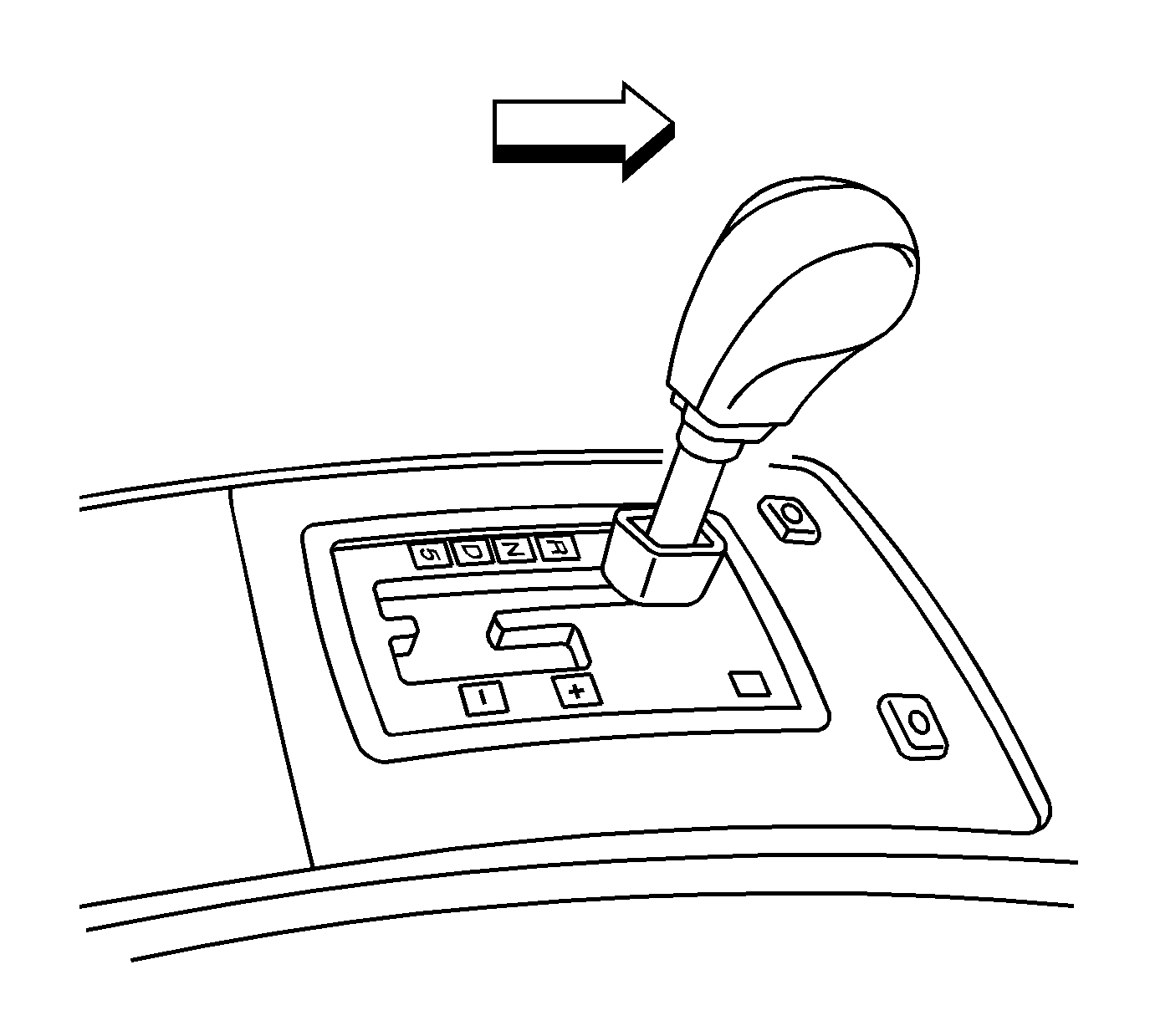
The floor shift control is located in the center console assembly. It contains
the upshift and downshift switches for the driver shift control system. The driver
shift control system is activated when the floor shift control lever is moved to the
right into the manual position from the drive position. When the manual position is
selected, an upshift is requested by pushing the floor shift control lever forward
to the + position and a downshift is requested by pulling the floor shift control
lever to the - position. When an upshift or a downshift is requested, a signal
is sent to the TCM which commands the shift solenoids ON or OFF to achieve the appropriate
gear.









